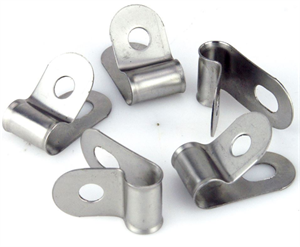Tempering Of Fourslide Stamping Parts
Fourslide Stamping Parts is a metal forming process in which materials (usually metal strips) are continuously stamped on a specialized machine tool with four sliding punches to form complex part shapes. During the Fourslide Stamping process, subsequent heat treatment steps such as tempering may be necessary as the metal undergoes plastic deformation and potential quenching (if coolant is used).
The tempering temperature is crucial for the performance of Fourslide Stamping Parts, as it determines the material’s hardness, toughness, strength, and dimensional stability. Choosing the appropriate tempering temperature can balance these performance characteristics to meet the requirements of the parts in specific applications.
When determining the tempering temperature of Fourslide Stamping Parts, the following factors need to be considered:
Material type: Different metals and alloys have different heat treatment characteristics. Therefore, it is necessary to choose an appropriate tempering temperature based on the type of material used.
Part design: The shape, size, and wall thickness of a part can affect its heat treatment response. Complex shapes or thinner areas may require lower tempering temperatures to avoid excessive softening.
Application requirements: The usage environment, load conditions, wear resistance, and fatigue resistance of the parts will determine the required mechanical properties, thereby affecting the selection of tempering temperature.
Process parameters: The stamping speed, lubrication conditions, coolant, and other process parameters during the Fourslide Stamping process may also affect the internal stress and microstructure of the material, thereby affecting the selection of tempering temperature.
Heat treatment equipment: The ability, accuracy, and control level of tempering equipment will limit the available tempering temperature range.
Usually, the selection of tempering temperature is determined through experimentation and testing. Manufacturers may conduct a series of heat treatment tests to evaluate the performance of parts at different tempering temperatures. These tests may include hardness testing, tensile testing, impact testing, fatigue testing, etc. to determine the optimal tempering temperature.
The tempering temperature of Fourslide Stamping parts should be determined by a professional heat treatment engineer or material engineer based on specific circumstances. We will comprehensively consider factors such as material characteristics, part design, application requirements, and process parameters to ensure that the parts have the required performance and meet quality requirements.
